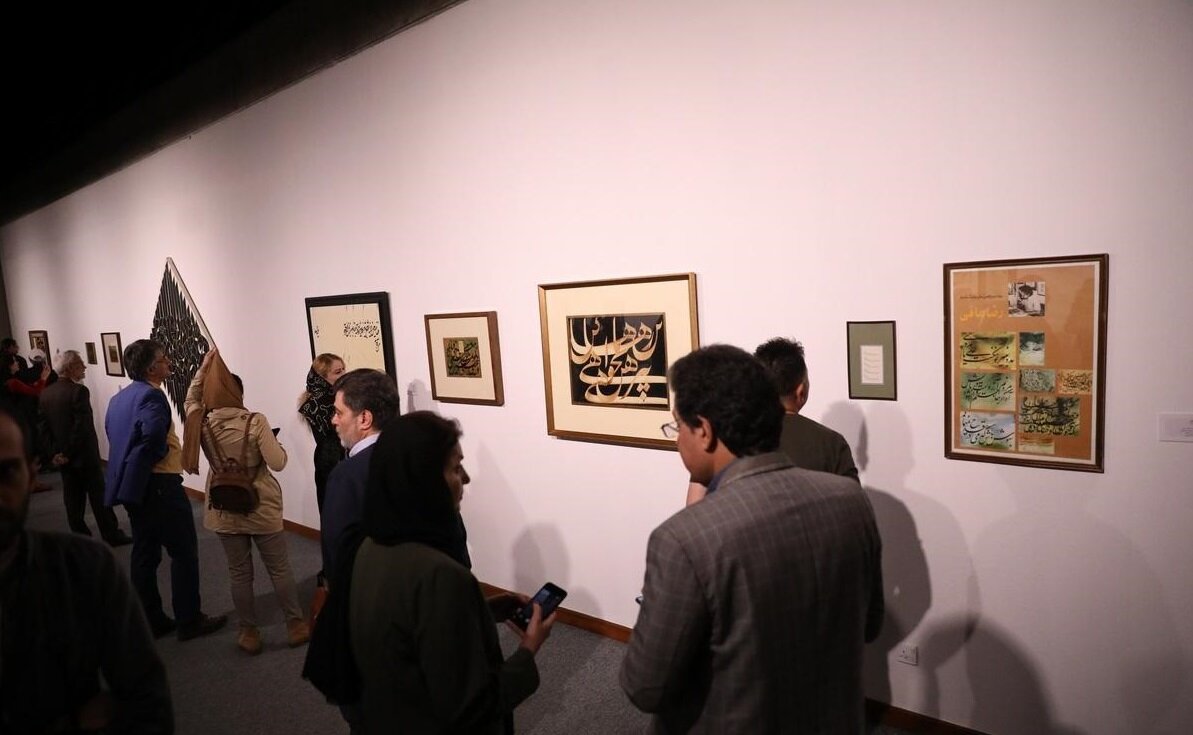TMoCA displaying works of pioneers of calligraphy

TEHRAN-On the occasion of the National Calligraphy Week in Iran, October 13 to 19, an exhibition titled “The Pioneers of Calligraphy” opened at the Tehran Museum of Contemporary Art (TMoCA) on Saturday.
A retrospective of one hundred years of Iran’s calligraphy evolution, the exhibition showcases over 100 works by 70 artists, ILNA reported.
On display are calligraphy works of renowned figures including Mohammad-Reza Kalhor, Mirza Gholam-Reza Esfahani, Mohammad-Hossein Emad-ol-Kottab, Ali-Akbar Kaveh, Gholam-Hossein Amirkhani, Mohammad Ehsaei, Yadollah Kaboli, Asadollah Shirazi, Hossein Zenderoudi, Reza Mafi, Faramarz Pilaram, and Nasrollah Afjei among others.
Persian calligraphy is one of the most revered arts throughout the history of Iran. It developed over time in Iran and the nations that depended on it or were influenced by it, such as those in Central Asia, Afghanistan, and the Indian subcontinent.
Around 1,000 years ago, Ibn Muqlah and his brother created six genres of Iranian calligraphy, namely “Tahqiq”, “Reyhan”, “Thuluth”, “Naskh”, “Toqi” and “Reqa”. These genres were common for four centuries in Persia. In the 7th century AH (1203 AD - 1299 AD), Hassan Farsi Kateb combined the “Naskh” and “Reqa” styles, and invented a new genre of Persian calligraphy named “Taliq”.
The renaissance of Persian calligraphy began during 14th century AH (1883 AD - 1980 AD) when Mir Ali Tabrizi developed “Nastaliq” calligraphy style by combining “Naskh” and “Taliq”. Due to it is strength and beauty, it quickly became the most widely used style of calligraphy throughout Persia and the Islamic world. Nastaliq gradually flourished in the next two centuries until Mir-Emad Hassani (1554 – 1615 AD) perfected it to its highest splendor and beauty. During Safavid dynasty in the 16th century both Nastaliq and Thuluth were widely used by another famous calligrapher, Alireza Abbasi, who supervised the design of calligraphies in most mosques and architectural facades in Isfahan.
In the last two centuries the art of Persian calligraphy further evolved and new styles such as “Siyah mashq,” literary meaning “black practice,” and calligraphy painting blossomed to become one of the greatest symbols of Persian art and culture.
Along with the artworks on display at the “The Pioneers of Calligraphy,” a number of documents as well as calligraphy supplies and tools related to the master calligraphers are also on show.
Curated by Amir-Abbas Nasiri, the exhibit will run until October 22 at the TMoCA, adjacent to Laleh Park, North Kargar Ave.
SS/SAB
Leave a Comment